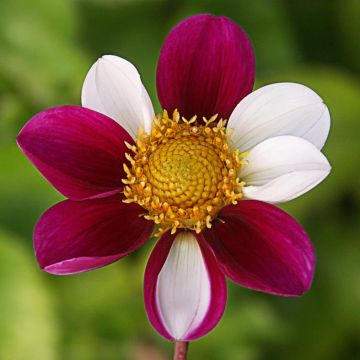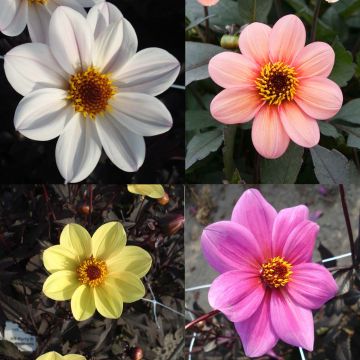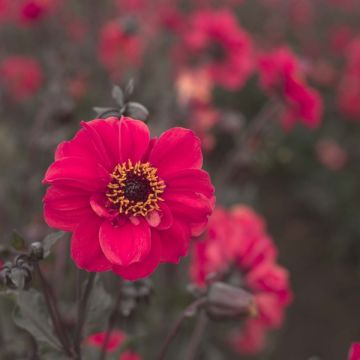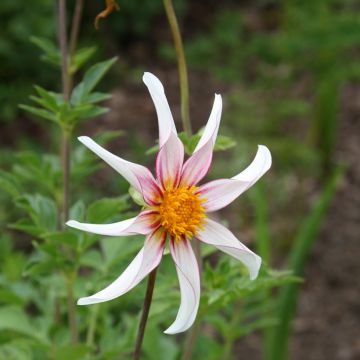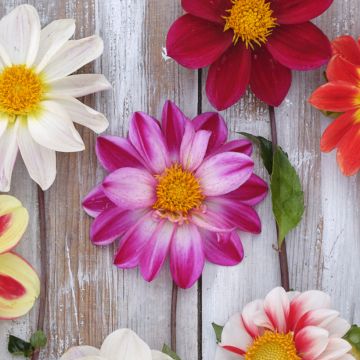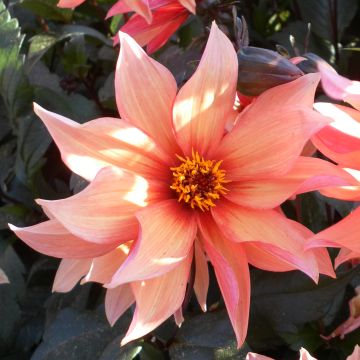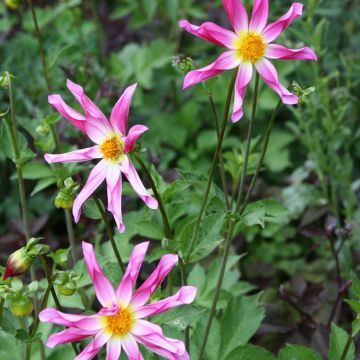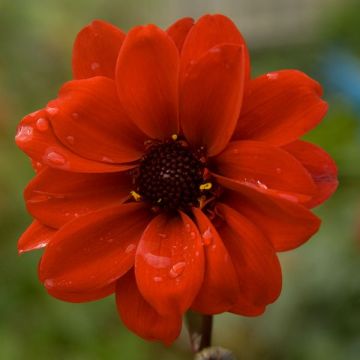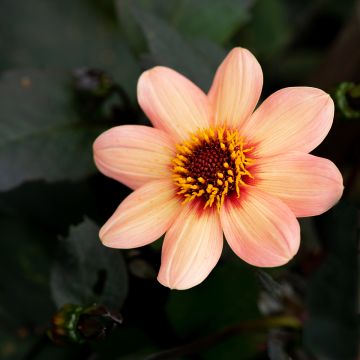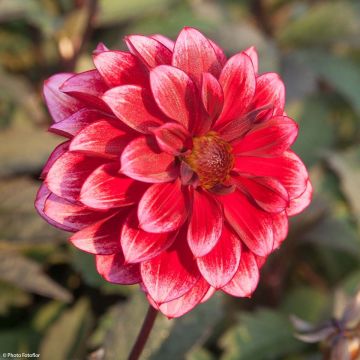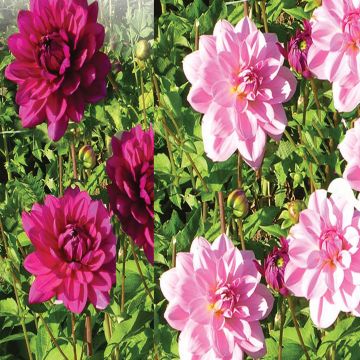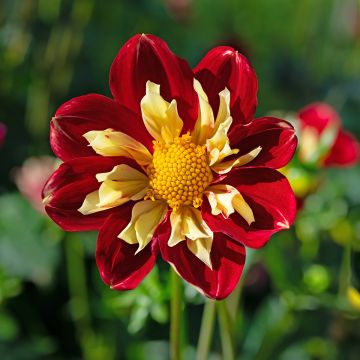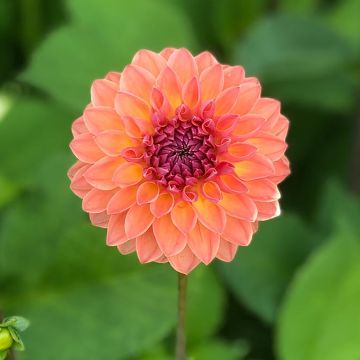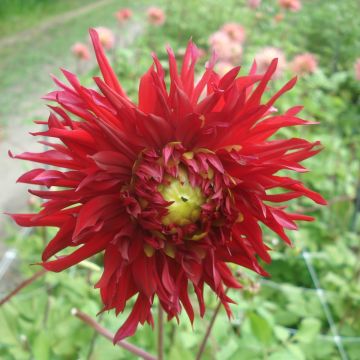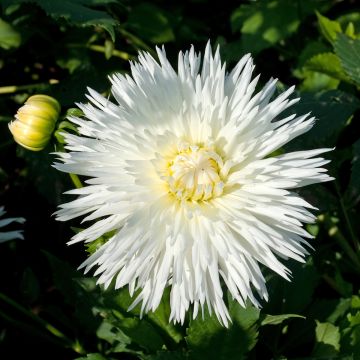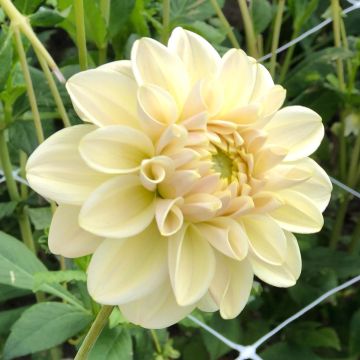

Dahlia Still Going Strong
Dahlia Still Going Strong
Dahlia Still Going Strong
Dahlia
No flowers obtained, hardly any leaves... for now, it's disappointing!
Lola , 15/11/2023
Special offer!
Receive a €20 voucher for any order over €90 (excluding delivery costs, credit notes, and plastic-free options)!
1- Add your favorite plants to your cart.
2- Once you have reached €90, confirm your order (you can even choose the delivery date!).
3- As soon as your order is shipped, you will receive an email containing your voucher code, valid for 3 months (90 days).
Your voucher is unique and can only be used once, for any order with a minimum value of €20, excluding delivery costs.
Can be combined with other current offers, non-divisible and non-refundable.
Why not try an alternative variety in stock?
View all →This plant carries a 6 months recovery warranty
More information
We guarantee the quality of our plants for a full growing cycle, and will replace at our expense any plant that fails to recover under normal climatic and planting conditions.
Would this plant suit my garden?
Set up your Plantfit profile →
Description
Dahlia Still Going Strong is a recent creation that stands out for its particularly early and prolonged flowering, as well as for the unusual colour of its blooms, a beautiful dark red with mahogany undertones. Its simple and moderately sized flowers, borne on tall flower stalks, are produced abundantly from late July until October. Stunning in shrub and flower beds, it also makes an excellent cut flower.
Dahlias, belonging to the Asteraceae family, are originally native to the high plateaus of Mexico. Currently, the approximately 20,000 horticultural varieties created by humans have arrived in gardens worldwide, much to our delight.
The 'Still Going Strong' variety is a landscape-type dahlia. The plant will reach a height of about 1.20 m (4ft) and has a bushy habit. Its flower heads take the form of pretty, round, single corollas with a diameter of 10 cm (4in), composed of a row of dark red ligulate florets that are fully open, surrounding a wide central disk of golden yellow, which is highly visited by bees and butterflies. The very branched stems are hollow, and the leaves are opposite and divided into 3 or 5 finely toothed lobes. The leaves are dark green, while the flower stalks are more or less reddish.
To encourage repeat blooming and extend the flowering period, make sure to remove faded flowers. Even better, regularly cut them to create attractive, colourful bouquets by combining various varieties.
The Dahlia Still Going Strong, with its mahogany-toned flowers reminiscent of large cosmos, will create remarkably colourful spots in beds alongside Echinaceas, Heleniums, and bronze fennel, for example. It also pairs well with the vibrant flowers of marigolds. Consider also combining it with Pennisetum villosum, a lovely feathery grass, to bring softness and delicacy to the decor.
As a star plant in borders and ornamental gardens, dahlias confidently accompany the most beautiful flowers as well as the humblest vegetables. They allow for beautiful potted displays or charming bouquets. In Mexico, this tuberous plant was initially cultivated as a root vegetable for consumption. However, its poor taste qualities assigned it the status of an ornamental plant. Since then, the interest in their beautiful exuberance has never waned.
Dahlia Still Going Strong in pictures
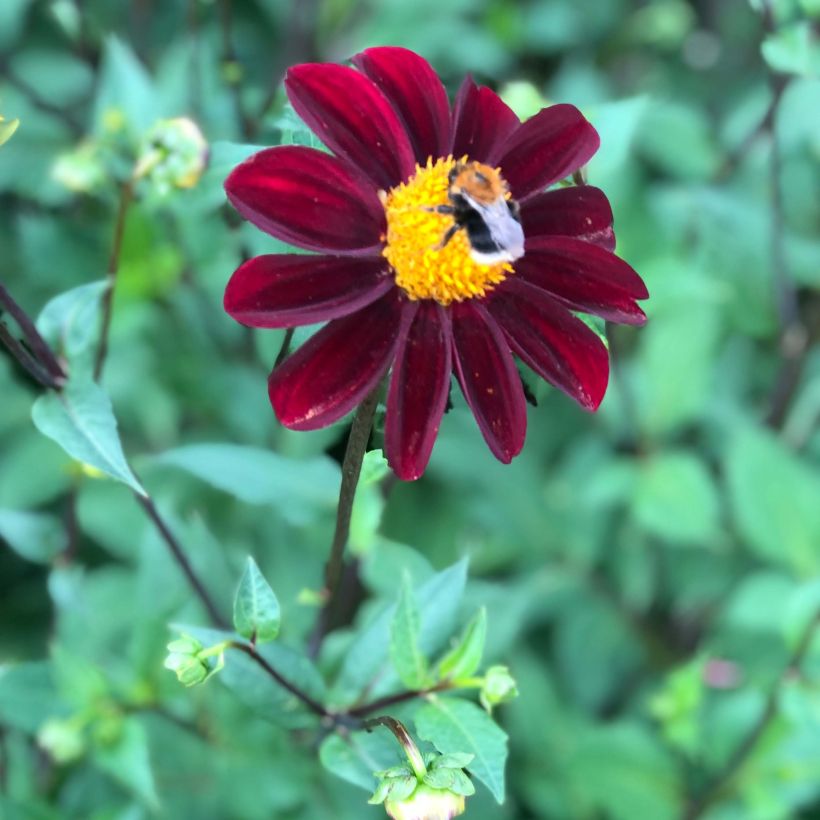

Plant habit
Flowering
Foliage
Botanical data
Dahlia
Still Going Strong
Asteraceae
Dahlia
Cultivar or hybrid
Other Landscape Dahlias
View all →Planting and care
Plant Dahlias Still Going Strong in full sun as soon as the last frost has passed. Rich, damp, and well-drained soil is perfect. However, waterlogging can promote tuber rot. Feel free to amend the soil with compost and sand if necessary. Work the soil deeply and enrich it, for example, with bonemeal. At the end of planting, water generously once and then regularly for the first 6 weeks to aid root development.
Dahlias are sensitive to cold and need to be overwintered. In November, the first frosts cause the foliage to turn black, indicating it's time to dig them up. Carefully remove the tubercles from the soil. Shake off as much soil as possible. Let the foliage dry so that the tubercles can replenish their reserves. Then cut the stems to 10 cm (4in). Spread your bulbs in a crate on newspaper. Store them in a frost-free, dry, cool, and dark place, such as a garage or attic. In warmer regions or close to the coast, where there are few frost days per year, you can leave them in place. In this case, simply cover the soil with a layer of leaves or straw for protection.
Taller dahlias require staking as they are susceptible to wind and rain, which can cause the stems to bend.
Planting period
Intended location
Care
Planting & care advice
-
, onOrder confirmed
Reply from on Promesse de fleurs
Similar products
Haven't found what you were looking for?
Hardiness is the lowest winter temperature a plant can endure without suffering serious damage or even dying. However, hardiness is affected by location (a sheltered area, such as a patio), protection (winter cover) and soil type (hardiness is improved by well-drained soil).

Photo Sharing Terms & Conditions
In order to encourage gardeners to interact and share their experiences, Promesse de fleurs offers various media enabling content to be uploaded onto its Site - in particular via the ‘Photo sharing’ module.
The User agrees to refrain from:
- Posting any content that is illegal, prejudicial, insulting, racist, inciteful to hatred, revisionist, contrary to public decency, that infringes on privacy or on the privacy rights of third parties, in particular the publicity rights of persons and goods, intellectual property rights, or the right to privacy.
- Submitting content on behalf of a third party;
- Impersonate the identity of a third party and/or publish any personal information about a third party;
In general, the User undertakes to refrain from any unethical behaviour.
All Content (in particular text, comments, files, images, photos, videos, creative works, etc.), which may be subject to property or intellectual property rights, image or other private rights, shall remain the property of the User, subject to the limited rights granted by the terms of the licence granted by Promesse de fleurs as stated below. Users are at liberty to publish or not to publish such Content on the Site, notably via the ‘Photo Sharing’ facility, and accept that this Content shall be made public and freely accessible, notably on the Internet.
Users further acknowledge, undertake to have ,and guarantee that they hold all necessary rights and permissions to publish such material on the Site, in particular with regard to the legislation in force pertaining to any privacy, property, intellectual property, image, or contractual rights, or rights of any other nature. By publishing such Content on the Site, Users acknowledge accepting full liability as publishers of the Content within the meaning of the law, and grant Promesse de fleurs, free of charge, an inclusive, worldwide licence for the said Content for the entire duration of its publication, including all reproduction, representation, up/downloading, displaying, performing, transmission, and storage rights.
Users also grant permission for their name to be linked to the Content and accept that this link may not always be made available.
By engaging in posting material, Users consent to their Content becoming automatically accessible on the Internet, in particular on other sites and/or blogs and/or web pages of the Promesse de fleurs site, including in particular social pages and the Promesse de fleurs catalogue.
Users may secure the removal of entrusted content free of charge by issuing a simple request via our contact form.
The flowering period indicated on our website applies to countries and regions located in USDA zone 8 (France, the United Kingdom, Ireland, the Netherlands, etc.)
It will vary according to where you live:
- In zones 9 to 10 (Italy, Spain, Greece, etc.), flowering will occur about 2 to 4 weeks earlier.
- In zones 6 to 7 (Germany, Poland, Slovenia, and lower mountainous regions), flowering will be delayed by 2 to 3 weeks.
- In zone 5 (Central Europe, Scandinavia), blooming will be delayed by 3 to 5 weeks.
In temperate climates, pruning of spring-flowering shrubs (forsythia, spireas, etc.) should be done just after flowering.
Pruning of summer-flowering shrubs (Indian Lilac, Perovskia, etc.) can be done in winter or spring.
In cold regions as well as with frost-sensitive plants, avoid pruning too early when severe frosts may still occur.
The planting period indicated on our website applies to countries and regions located in USDA zone 8 (France, United Kingdom, Ireland, Netherlands).
It will vary according to where you live:
- In Mediterranean zones (Marseille, Madrid, Milan, etc.), autumn and winter are the best planting periods.
- In continental zones (Strasbourg, Munich, Vienna, etc.), delay planting by 2 to 3 weeks in spring and bring it forward by 2 to 4 weeks in autumn.
- In mountainous regions (the Alps, Pyrenees, Carpathians, etc.), it is best to plant in late spring (May-June) or late summer (August-September).
The harvesting period indicated on our website applies to countries and regions in USDA zone 8 (France, England, Ireland, the Netherlands).
In colder areas (Scandinavia, Poland, Austria...) fruit and vegetable harvests are likely to be delayed by 3-4 weeks.
In warmer areas (Italy, Spain, Greece, etc.), harvesting will probably take place earlier, depending on weather conditions.
The sowing periods indicated on our website apply to countries and regions within USDA Zone 8 (France, UK, Ireland, Netherlands).
In colder areas (Scandinavia, Poland, Austria...), delay any outdoor sowing by 3-4 weeks, or sow under glass.
In warmer climes (Italy, Spain, Greece, etc.), bring outdoor sowing forward by a few weeks.






























